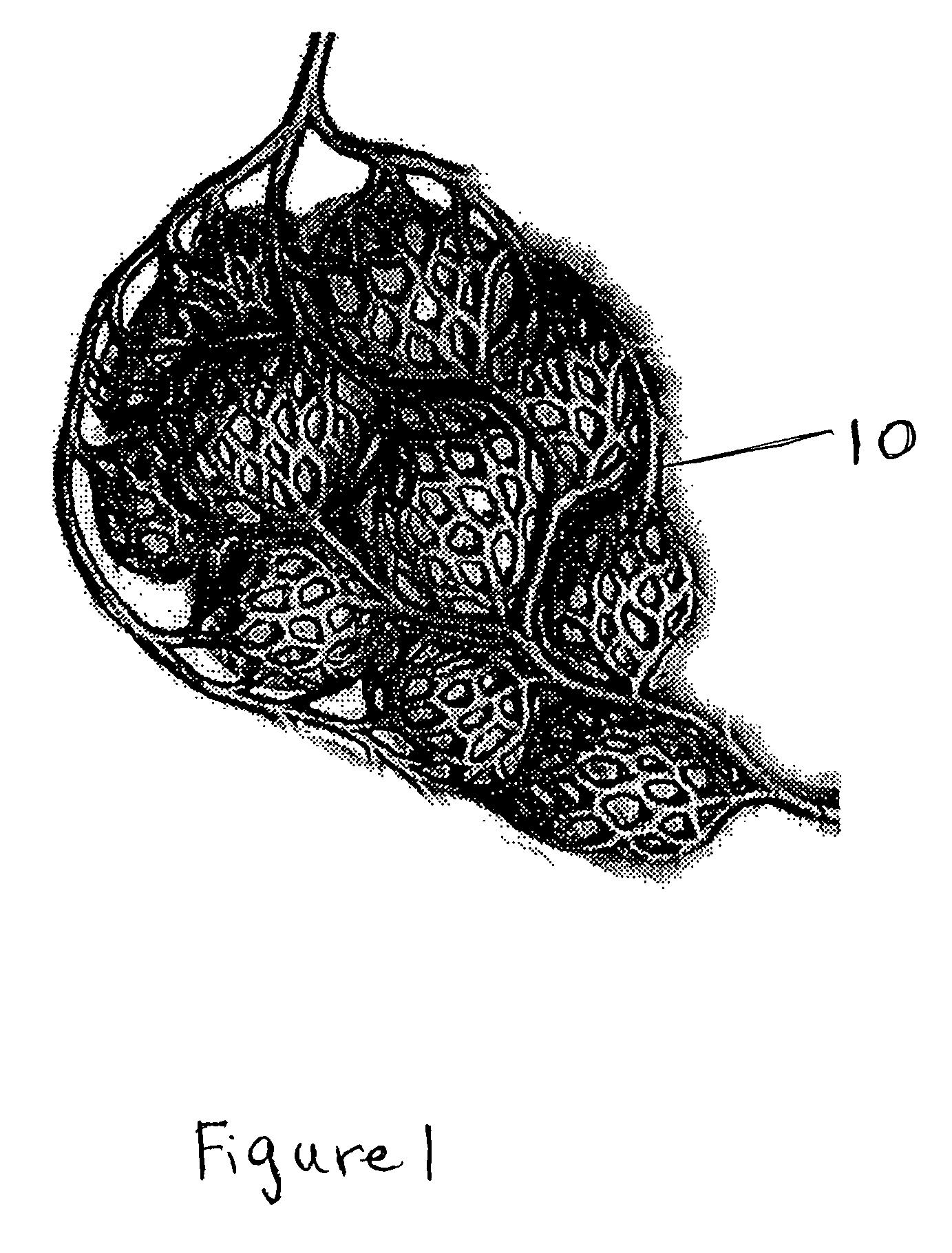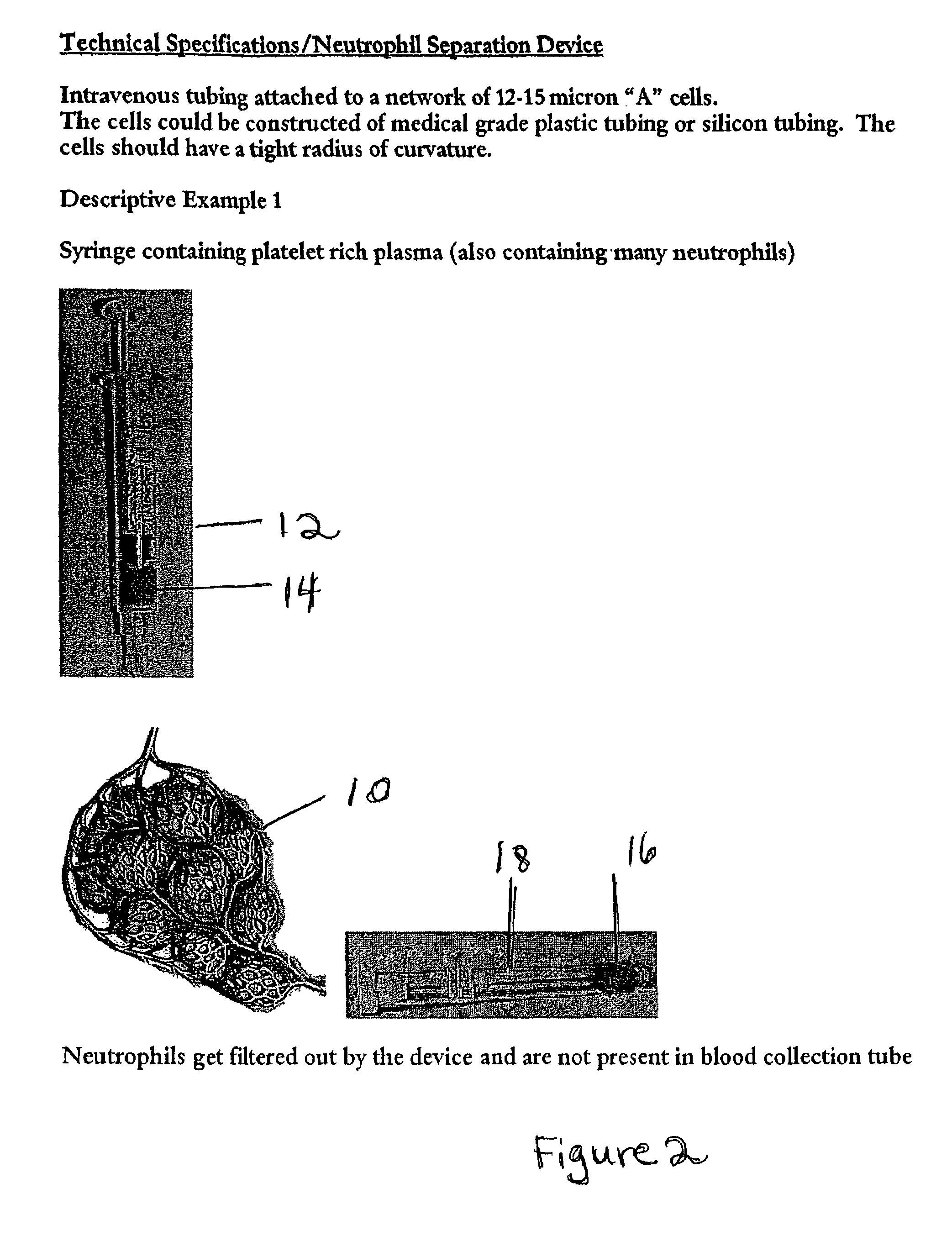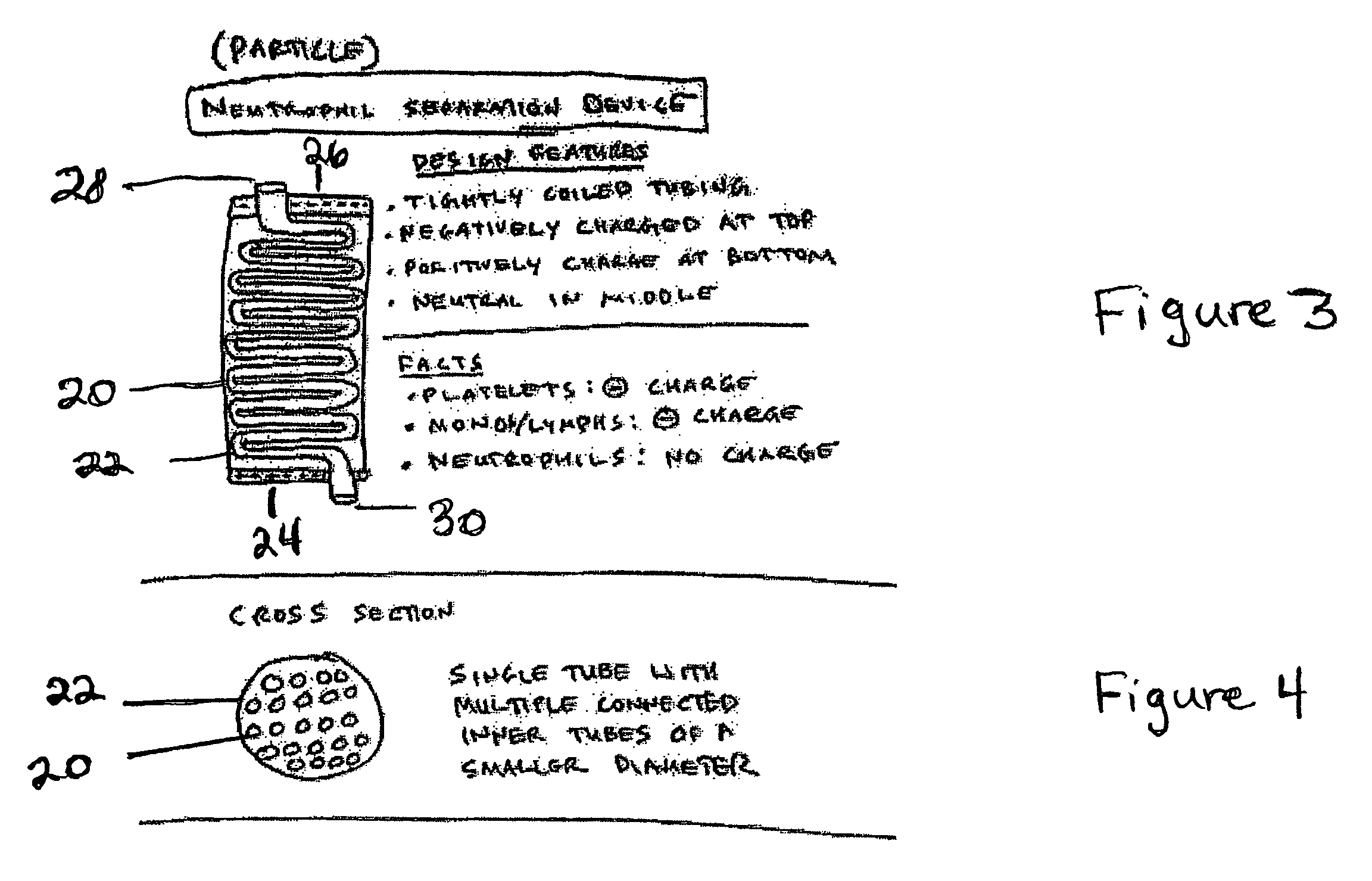Particle/cell separation device and compositions
a technology of particle/cell separation and composition, which is applied in the direction of tissue culture, diaphragm, biomass after-treatment, etc., can solve the problems of further damage, adverse effects of neutrophils in blood transfusions, and adverse effects of neutrophils, so as to prolong the storage time of unactivated platelets, and cause severe pain
- Summary
- Abstract
- Description
- Claims
- Application Information
AI Technical Summary
Benefits of technology
Problems solved by technology
Method used
Image
Examples
example 1
[0069]FIG. 5 shows a series of coiled tubes 30 for separation of the cellular components as described above. The tubes empty into a collection chamber 32. The sample to be purified enters through tubing 34 which may connect to the separation device 36 by a tubing adaptor 38. When a sample of platelet rich plasma enters the device, the smaller platelets are able to travel through the coiled tubing 30 to the collection chamber 32 more quickly than the neutrophils because of their smaller size and greater deformability. The neutrophils are retained in the coiled tubing.
example 2
[0070]In an alternative design, the device could exist within an electrical field as shown in FIG. 6. For example, each of the coiled tubes shown in Example 1 above, could be encased within a chamber 40 that has a negative charge at its apex 42 and a positive charge at it base 44. The center of the chamber would be neutral in charge. When the sample enters the chamber, the platelets are able to travel through the coiled tubing as in Example 1 because of their small size and deformability. Additionally, as the platelets carry a net negative charge, their separation is further facilitated because of the positive charge at the bottom of the chamber.
example 3
[0071]In another alternative design, the device could be made of tubing that conducts electricity (FIG. 7). A charge 46 could then be run through the tubing and a gradient could be established. In the device shown in FIG. 7, the negatively charged blood components such as the platelets would be hindered by the positive charge of the walls of the tubing. In this example, the neutrophils would be collected first and separated from the other blood components. As in Example 2 above, the separation of the neutrophils from the platelets is based upon the small size, deformability and negative charge of the platelets relative to the neutrophils.
PUM
| Property | Measurement | Unit |
|---|---|---|
| diameter | aaaaa | aaaaa |
| volume | aaaaa | aaaaa |
| diameter | aaaaa | aaaaa |
Abstract
Description
Claims
Application Information
 Login to View More
Login to View More - R&D
- Intellectual Property
- Life Sciences
- Materials
- Tech Scout
- Unparalleled Data Quality
- Higher Quality Content
- 60% Fewer Hallucinations
Browse by: Latest US Patents, China's latest patents, Technical Efficacy Thesaurus, Application Domain, Technology Topic, Popular Technical Reports.
© 2025 PatSnap. All rights reserved.Legal|Privacy policy|Modern Slavery Act Transparency Statement|Sitemap|About US| Contact US: help@patsnap.com



